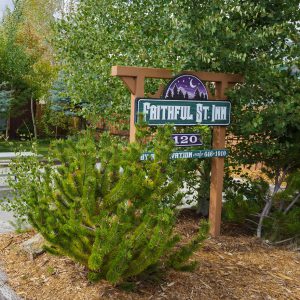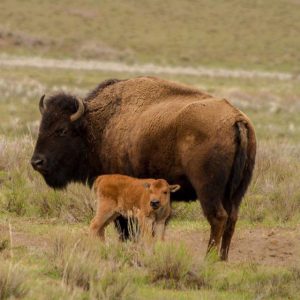Our first national park, Yellowstone is the centerpiece of the Greater Yellowstone Ecosystem which is the largest remaining nearly-intact ecosystem in the Earth's northern temperate zone. Comprised of mountain ranges, canyons, rivers, waterfalls, and lakes, the park spans an area of about 3500 square miles. Yellowstone is truly a land of fire and ice. The geology of Yellowstone is a study in the dynamic forces of nature. As a result, the current landscape is just the most recent chapter in a book whose pages are being turned daily.
Volcanism & Geysers
Lava flows and volcanic rock cover most of the land area of Yellowstone National Park. Because, in the very middle of Yellowstone, a large chamber of molten hot magma sits so close to the surface of the earth that it heats the entire Yellowstone Plateau and provides heat for half the world’s geothermal features that are part of the wonder and awe of Yellowstone. It is so large that it went unnoticed for over a hundred years. This dynamic "hot spot" expands and contracts and, in so doing, raises and lowers the region by measurable amounts each year. Over geologic time, it has erupted multiple times and the last eruption left behind a volcanic caldera about 20 by 30 miles in size. It will probably erupt again in the near geologic future.
Glaciers & landscaping
Between past eruptions of this Supervolcano, Yellowstone's landscape was covered by the ice of many glaciers. Consequently, glaciers modified the volcanic landforms as they ground across them. Mountain tops were carved off. Glaciers and their outwash determined the drainage patterns of the major rivers within the park. In addition, many of the rocks and boulders found in the northern areas of Yellowstone dropped from the ice. And, as the ice passed over the geothermal areas, rocks and debris dropped out to create new hills.
Trees, Plants, & Flowers
As Yellowstone’s land is full of rocks, Lodgepole Pine is the most common tree in the park due in part to their shallow roots which can spread out and grab on for growth. In addition, some of their pine cones open after being burned, so, the forest naturally regenerates after a forest fire. The Visitor Education Center at Grant Village has an exhibit on forest fire and the lodgepole pine. The park's vast forests and grasslands also include unique species of plants. As such, you will find plants growing in the geyser basins in the middle of winter! While July and August are traditionally the busiest months for visitors, those months also provide vast landscapes full of colorful wildflowers in bloom.
Mammals, birds, fish, & reptiles
Yellowstone National Park is the largest and most famous megafauna location in the contiguous United States. Thus, hundreds of species of mammals, birds, fish, and reptiles have been documented in the park. And, several species are either endangered or threatened. Grizzly bears, wolves, bison, and elk live in the park. In fact, the Yellowstone National Park bison herd is the oldest and largest public bison herd in the United States. Also, Yellowstone is home to over 70 species of birds. As a result, bird watchers come to look for loons, pergrine falcons, golden eagles, bald eagles, sandhill cranes, trumpeter swans, and osprey. In addition, Yellowstone is known for several blue-ribbon trout streams for fly fishing in Yellowstone. Native Cutthroat Trout, Arctic Grayling, and Mountain Whitefish populate the waters along with non-native Brown, Rainbow, and Brook trout. Most rivers are catch and release and the scenery surrounding the rivers is breathtaking.
Touring Yellowstone national park
From before Yellowstone was a national park, to the time the Army was put in place to protect it, to the introduction of automobile travel, Yellowstone has continued to attract visitors. Yellowstone National Park is much bigger than most folks realize. You can spend one day or several decades exploring and still find more to go see. The majority of visitors to Yellowstone spend just a few days of their overall vacation in the park. Regardless, we recommend taking a tour of the park your first day. You will see more in less time instead of less in more time.
If you have just one day, we recommend not trying to take in the whole park. You will better enjoy the visit if you spend your day on just the South Loop road. World famous Old Faithful Geyser is on that loop along with the Grand Canyon of the Yellowstone and the Fountain Paint Pots. If you have a second day, spend it on the North Loop road. If you have the luxury of a third day, we recommend spending more time between Madison Junction and the Old Faithful area exploring the geysers basins. Those with the time can spend a half day in Upper Geyser Basin alone!


